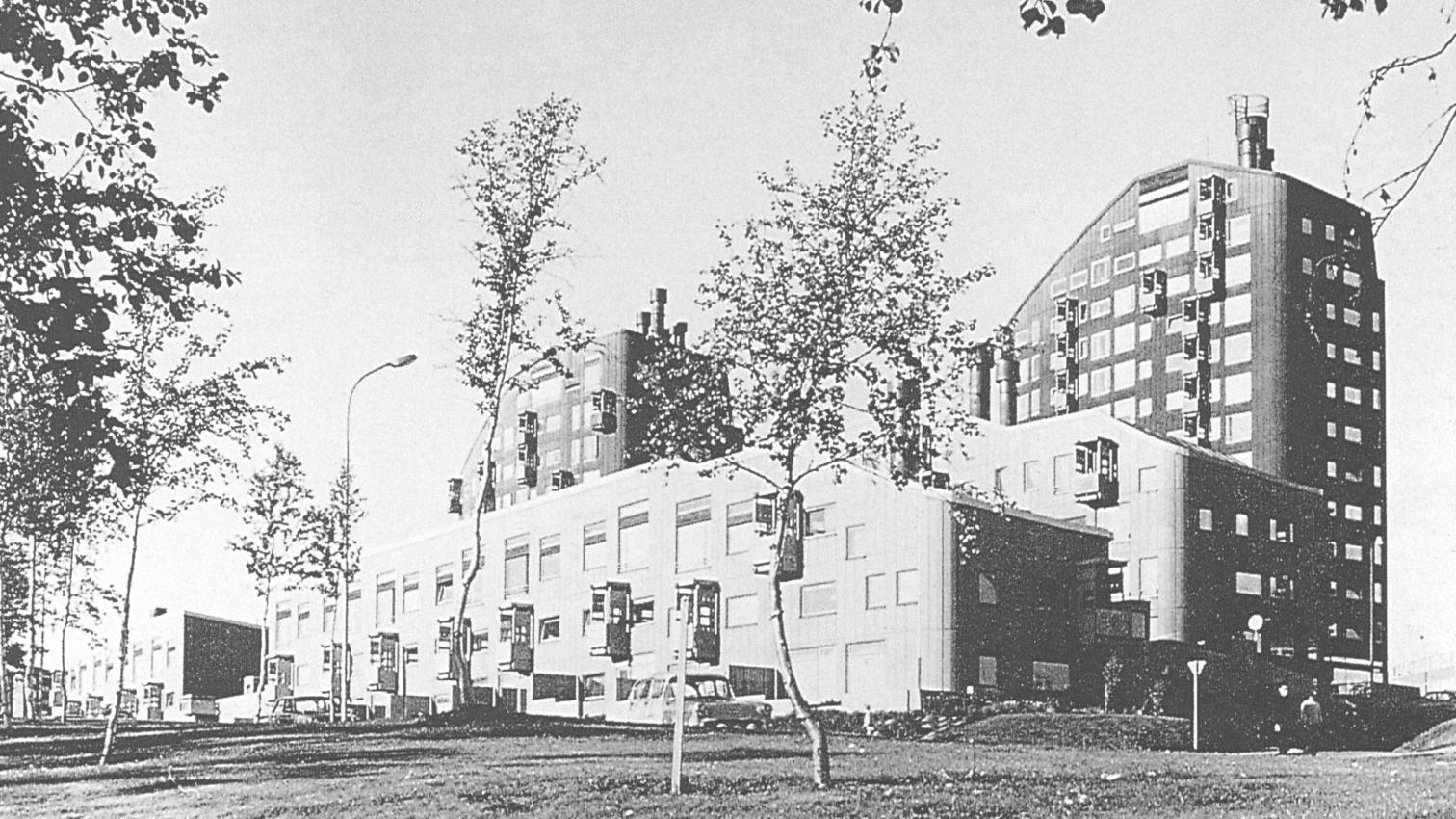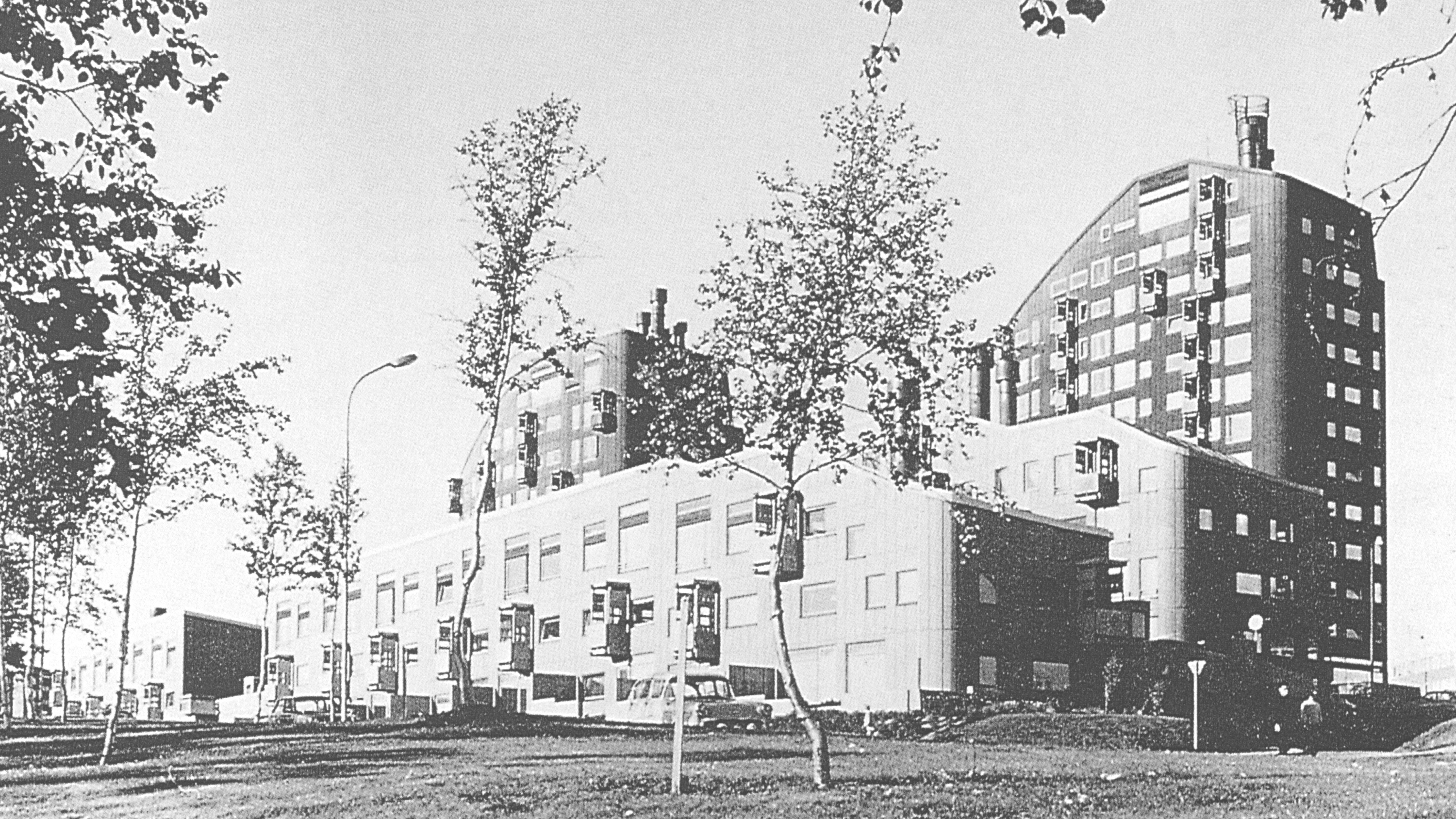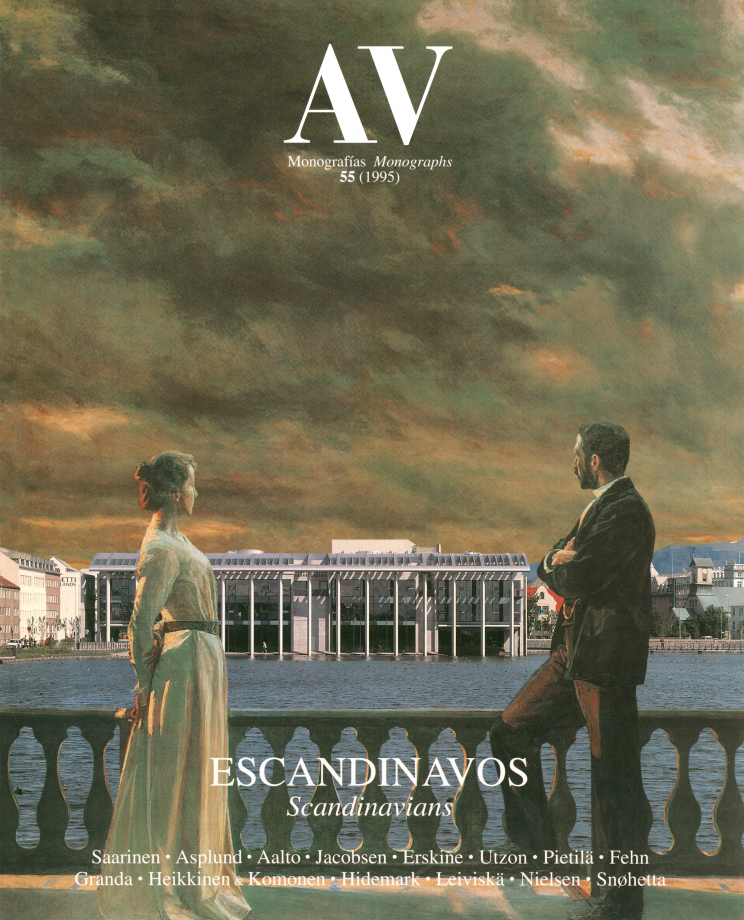Ralph Erskine (1914)
A Participative Functionalist

Housing Complex, Offices, Stores and Church in Kiruna, Lapland
Ralph Erskine’s architectural approach stresses the influence of environmental factors. He listens to users by incorporating them into the design process itself studies the history and climatic factors of the site and develops an overall vision for its activities into which the starting points filter. Nevertheless, Erskine ’s architecture always preserves its recognisability, demonstrating the designer’s skills both in the creation of a clear architectural profile and in the area of communication, of conveying his thoughts.
Characteristic of Erskine’s architecture is a strong identity, not only of form but also through solutions that stimulate social interaction; both factors facilitate users’ identification with their immediate surroundings. The design of residential areas forms an important part of Erskine’s work. He divides large projects into suitably compact areas in which working contacts can arise between residents, and the aim of his architectural methods is to make these connections easier to maintain - through, for example, the placing of thoroughfares and buildings in relation to each other. In many briefs, Erskine has also been bound by strict economic limits that have led to inexpensive solutions and the use of cheap materials...[+]






